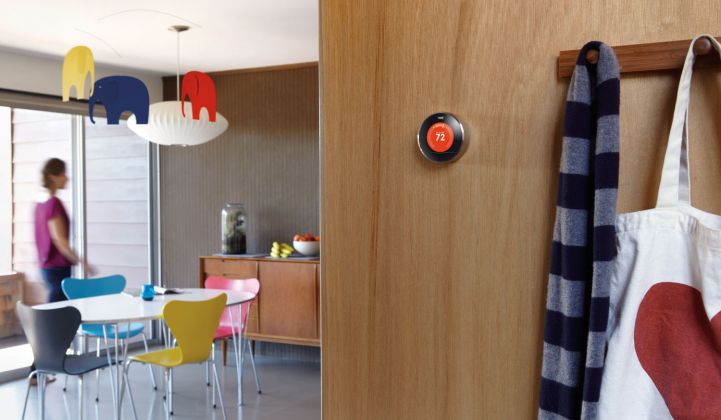Last June, Nest announced some big names in the first round of integration with its thermostat, which acts as the hub for its smart home platform.
This week at the Consumer Electronics Show 2015, the list of names has gotten bigger. LG, Whirlpool, Lutron, Osram and Philips are just some of the companies that have announced integration available now or coming in the first half of this year.
The sixteen announcements made at CES represent just a fraction of the more than 5,000 developers that are in different stages of working with Nest, according to the company.
Not all of the names are new, but they do show the evolution of the developer program. Whirlpool and Big Ass Fans were two of the companies that announced they would integrate with Nest's platform last year, and those integrations will be complete in early 2015.
The functions across the different products are similar in nature, but slightly different depending on the device. For LG, appliances can go into an energy-saving mode when users are not at home, or the Whirlpool washing machine can run on a quieter setting when the Nest thermostat senses that the house is occupied.
Door locks such as Chamberlain garage doors or the August Smart Lock can set the Nest thermostat to its "home" setting as soon as the doors are unlocked. Safety features are also part of the integration for devices such as Philips' LED Hue bulbs and Beep, a Wi-Fi-connected music dial. The bulb can flash a different color when the Nest Protect smoke alarm detects something is wrong, and the dial can turn the music down in the same situation.
Most of the early movers in the smart home market are interested in safety and security, but that doesn’t mean that saving energy is unimportant to consumers.
For instance, Whirlpool’s appliances will be able to integrate with Nest’s Rush Hour Rewards utility program. “This is definitely something we will see more of as we add utility partners and Works with Nest partners,” Ha Thai, spokesperson for Nest, told Greentech Media.
Of course, people who are buying a top-of-the-line (and high-priced) Whirlpool washer-and-dryer set are probably more interested in coming home to clothes that aren’t wrinkled than they are about saving a few dollars a year by shifting their dryer cycle to a time when power is in less demand or when it best fits their utility pricing program.
But seamless integration between devices and utility programs is coming. For utilities that can sign up the homes and devices that have significant load to shed (electric vehicles, thermostats, pool pumps and water heaters), the savings could be considerable for many regions like Texas, where the grid is strained on the hottest days of the year.
Now that devices are ready to interact with the grid, utilities will have to develop novel pricing programs that can take advantage of the devices. ChargePoint is one of the companies that also announced it is integrating its residential EV charger with the Nest thermostat.



